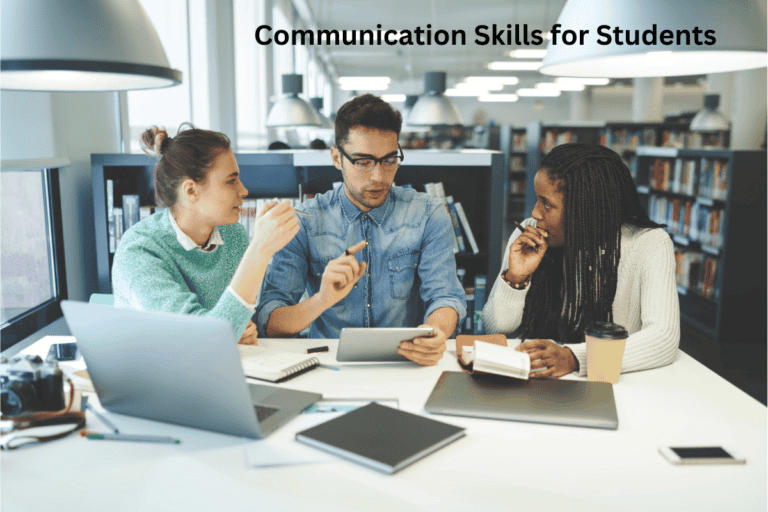Technological Pedagogy: Educators and the Digital Landscape
Are you ready to navigate the ever-evolving digital landscape in education? Just as a compass guides you through uncharted territory, technological pedagogy can help educators successfully navigate the digital landscape and enhance their instructional practices.
As an educator, you may find yourself facing various challenges in integrating technology in the classroom, but fear not, for there are strategies to overcome these obstacles and create a digital learning environment that engages and empowers your students.
So, buckle up and get ready to discover the importance of technological pedagogy and explore the future trends that await in this dynamic field.
Key Takeaways
- Technological pedagogy enhances student engagement and fosters 21st-century skills.
- Integrating technology in the classroom creates dynamic learning environments and enables personalized learning experiences.
- Overcoming challenges in technological pedagogy requires embracing a growth mindset, advocating for increased funding and support, and providing ongoing support and training for educators.
- Digital tools and platforms for educators enhance instructional effectiveness, provide a dynamic and interactive learning experience, and foster collaboration among educators.
The Importance of Technological Pedagogy
In today's fast-paced digital era, embracing technological pedagogy isn't just an option but a necessity for educators seeking to enhance student engagement and foster 21st-century skills. The importance of technological pedagogy lies in its ability to revolutionize traditional teaching methods and create dynamic learning environments that cater to the needs and interests of today's tech-savvy students.
Pedagogy, the art and science of teaching, has evolved alongside advancements in technology. Integrating technology into the classroom allows educators to tap into a vast array of digital resources and tools that can enhance the learning experience. By incorporating multimedia elements, such as videos, interactive simulations, and online collaboration platforms, educators can create engaging and interactive lessons that capture students' attention and facilitate deeper understanding.
Furthermore, technological pedagogy enables personalized learning experiences. With the help of data-driven tools and platforms, educators can gather valuable insights into students' strengths, weaknesses, and learning preferences. This information can then be used to tailor instruction and provide targeted support to individual students, ensuring that every learner receives the attention and resources they need to succeed.
Understanding the Digital Landscape
You've got the drive to understand the digital landscape, and that's a game-changer.
Digital literacy skills are essential in today's tech-savvy world, equipping you with the ability to navigate, evaluate, and create digital content.
By embracing technology, you open up a world of opportunities for yourself and your students, unlocking the benefits of personalized learning, collaboration, and access to a vast array of educational resources.
Let's explore this digital realm together and revolutionize education.
Digital Literacy Skills
Developing digital literacy skills is crucial in navigating and harnessing the power of the ever-evolving digital landscape. As an educator, it's imperative to equip yourself with the necessary knowledge and tools to effectively teach and guide your students in the digital realm.
To enhance your digital literacy skills, consider the following:
- Engage in continuous digital literacy training:
- Attend workshops and webinars focused on digital literacy.
- Seek out online resources such as educational websites, blogs, and forums that provide valuable insights and strategies for digital literacy instruction.
- Embrace online resources:
- Explore interactive platforms that offer engaging digital literacy activities.
- Utilize online tutorials and guides to enhance your understanding of digital tools and technologies.
Benefits of Technology
Harness the power of technology to unlock a world of possibilities and transform the digital landscape. The advantages and positive impacts of integrating technology in education are numerous. Technology enables personalized learning experiences tailored to individual student needs, promoting engagement and motivation. It allows for seamless collaboration, connecting students and educators across geographical boundaries, fostering global awareness and cultural understanding. With access to a wealth of information at their fingertips, students can conduct research, analyze data, and develop critical thinking skills. Technology also enhances accessibility, making education more inclusive for students with disabilities. Moreover, it provides educators with tools for efficient assessment and feedback, enabling data-driven decision-making and targeted interventions. Embracing technology in education opens up new horizons, empowering students and educators to thrive in the digital age.
| Advantages | Positive Impacts |
|---|---|
| Personalized learning | Tailored education |
| Seamless collaboration | Global awareness |
| Research and analysis skills | Critical thinking development |
| Accessibility | Inclusive education |
| Efficient assessment and feedback | Data-driven decision-making |
Integrating Technology in the Classroom
Embrace the digital revolution and revolutionize your classroom by seamlessly incorporating cutting-edge technology to enhance student learning and engagement. The integration of technology in the classroom opens up a world of possibilities for active learning and blended learning. Here are some key points to consider:
- Active Learning:
- Technology allows students to actively participate in their education, rather than passively absorbing information.
- Interactive exercises, online discussions, and virtual simulations engage students and promote critical thinking skills.
- Utilize educational apps and software that encourage collaboration, problem-solving, and creativity.
- These tools can transform traditional lessons into dynamic, interactive experiences.
- Blended Learning:
- Blend traditional teaching methods with online resources to create a personalized learning environment.
- Incorporate multimedia elements such as videos, podcasts, and interactive presentations to cater to different learning styles.
- Online assessments and feedback platforms provide instant data on student progress, enabling personalized instruction and timely interventions.
Enhancing Student Engagement and Learning
Get ready to revolutionize your classroom with interactive learning activities, gamification in education, and collaborative online platforms.
By incorporating these innovative tools into your teaching repertoire, you can take student engagement and learning to new heights.
With interactive activities, students can actively participate in their own learning, making it more dynamic and memorable.
Gamification adds an element of fun and competition, motivating students to strive for excellence.
And with collaborative online platforms, students can collaborate with their peers, enhancing their communication and critical thinking skills.
Get ready to transform your classroom into a digital learning haven!
Interactive Learning Activities
Transform your classroom into an engaging and interactive digital learning environment through the incorporation of dynamic and data-driven interactive learning activities. By leveraging virtual simulations and online assessments, you can enhance student engagement and promote active learning.
Virtual simulations provide students with immersive experiences that allow them to explore complex concepts in a realistic and interactive manner. Whether it's conducting a virtual science experiment or exploring historical events through a virtual field trip, these simulations enable students to actively participate in their learning and deepen their understanding.
Online assessments offer a way to gather real-time data on student performance and progress. With the ability to provide immediate feedback, these assessments allow educators to identify areas where students may be struggling and tailor their instruction accordingly. Additionally, online assessments provide opportunities for students to practice and apply their knowledge, promoting deeper learning and critical thinking skills.
Incorporating interactive learning activities into your classroom not only increases student engagement but also fosters a data-driven approach to instruction, empowering educators to make informed decisions and support student learning effectively.
Gamification in Education
By incorporating gamification into your classroom, you can further enhance student engagement and promote active learning, taking your interactive digital learning environment to the next level. Gamification techniques leverage the principles of game design to make learning more enjoyable and motivating for students. It taps into their natural inclination for competition, achievement, and rewards, creating a dynamic and immersive learning experience.
To help you understand the impact of gamification in education, here is a visual representation of some effective gamification techniques and their benefits:
| Gamification Technique | Benefits |
|---|---|
| Leaderboards | Encourages healthy competition and motivates students to excel. |
| Badges and Rewards | Recognizes achievements and provides a sense of accomplishment. |
| Progress Tracking | Allows students to monitor their growth and set goals for improvement. |
| Quests and Challenges | Engages students in problem-solving activities and critical thinking. |
Collaborative Online Platforms
Collaborative online platforms revolutionize student engagement and learning, providing an immersive and interactive digital environment for collaborative problem-solving and knowledge sharing. These platforms offer a wide range of features and tools that facilitate online collaboration and enhance the virtual classroom experience.
Here are two key benefits of using collaborative online platforms:
- Real-time communication: Online collaboration allows students to connect with their peers and instructors in real-time, fostering active discussions and idea exchange. Through features like chat, video conferencing, and discussion boards, students can engage in meaningful conversations and receive immediate feedback, enhancing their learning experience.
- Shared resources and documents: Collaborative platforms enable students to access and share resources, documents, and multimedia files, creating a centralized repository of knowledge. This encourages collaboration, as students can work together on projects, provide feedback, and collectively build upon each other's ideas.
Overcoming Challenges in Technological Pedagogy
Embrace the ever-evolving digital landscape and navigate the challenges of technological pedagogy with confidence and ingenuity. Overcoming barriers and ensuring effective implementation of technology in education is crucial for the success of both educators and students.
One of the key challenges in technological pedagogy is the resistance to change. Educators may feel overwhelmed by the rapid advancements in technology and the need to constantly adapt their teaching methods. However, by embracing a growth mindset and seeking professional development opportunities, educators can overcome this barrier and confidently integrate technology into their classrooms.
Another challenge is the lack of resources and infrastructure. Many schools struggle to provide their educators and students with the necessary tools and access to technology. This can hinder effective implementation of technological pedagogy. To address this, educators should advocate for increased funding and support from educational institutions and policymakers, ensuring that all students have equal opportunities to benefit from technology.
Lastly, there is a need for ongoing support and training for educators. Technology is constantly evolving, and educators must stay updated with the latest tools and techniques. Providing continuous professional development opportunities and establishing a network of support can help educators overcome the challenges of technological pedagogy and ensure successful implementation in the classroom.
Embrace the challenges of technological pedagogy and seize the opportunities it brings. By overcoming barriers and embracing effective implementation strategies, educators can empower their students and create a dynamic and engaging learning environment.
| Challenges | Solutions | Benefits |
|---|---|---|
| Resistance to change | Embrace a growth mindset | Enhanced teaching methods |
| Lack of resources | Advocate for funding | Equal opportunities |
| Ongoing support | Continuous professional | Dynamic learning |
| development | environment |
Digital Tools and Platforms for Educators
Are you ready to revolutionize your teaching with cutting-edge digital tools and platforms?
In today's digital landscape, educators have access to a wide range of digital tools and platforms that can enhance their teaching practices and improve student learning outcomes. By utilizing these innovative resources, you can create engaging and interactive learning experiences that cater to the needs and preferences of your students.
Digital assessment tools have emerged as a game-changer in education. These tools allow you to assess student progress and understanding in real-time, providing valuable data that can inform your instructional decisions. From online quizzes and polls to interactive assessments, digital assessment tools enable you to track student performance, identify areas of improvement, and personalize instruction accordingly.
Online learning platforms have also revolutionized the way educators deliver content and engage with students. These platforms provide a virtual learning environment where students can access resources, participate in discussions, collaborate with peers, and submit assignments. With features such as video conferencing, chat functionality, and multimedia integration, online learning platforms offer a dynamic and interactive space for teaching and learning.
Incorporating digital assessment tools and online learning platforms into your teaching repertoire can greatly enhance your instructional effectiveness and student engagement. Embrace the digital revolution and unlock the full potential of technology in education.
Professional Development in the Digital Age
As educators navigate the digital landscape, it's essential to embrace professional development opportunities in the digital age to enhance your instructional effectiveness and stay up to date with the latest innovative, tech-savvy, and data-driven teaching practices. However, professional development in the digital age comes with its own set of challenges.
One of the main challenges is the rapid pace of technological advancements. With new tools and platforms constantly emerging, it can be overwhelming to keep up with the latest trends. To overcome this challenge, it's important to establish a network of like-minded educators who can share their knowledge and experiences. Online communities, webinars, and conferences can provide valuable insights and help you stay abreast of the latest developments.
Another challenge is the effective implementation of digital tools and platforms in the classroom. It isn't enough to simply learn about these tools; educators must also understand how to integrate them into their instructional practices. To address this challenge, professional development programs should focus on providing hands-on experiences and practical strategies for incorporating technology into lesson plans. This can include workshops, coaching sessions, and collaborative projects where educators can experiment with new tools and receive feedback.
Assessing Technological Competency in Educators
Assessing your technological competency as an educator is crucial in today's digital landscape.
Teacher training programs can provide you with the necessary skills and knowledge to effectively integrate technology into your teaching practice.
Additionally, digital skills assessments can help identify areas of strength and areas that need improvement, allowing you to tailor your professional development and enhance your overall technological proficiency.
Teacher Training Programs
With the digital landscape constantly evolving, educators must embrace technology and undergo rigorous training programs to ensure their technological competency.
Teacher preparation is crucial in equipping educators with the necessary skills to effectively integrate technology into their classrooms. Online resources play a key role in providing educators with accessible and up-to-date training materials. These resources offer a wide range of courses, tutorials, and webinars that cover various aspects of educational technology. They enable educators to learn at their own pace and acquire new skills that align with the needs of their students.
Additionally, teacher training programs should focus on data-driven approaches to evaluate the impact of technology on student outcomes. By utilizing data, educators can make informed decisions and continuously improve their teaching practices in the digital age.
Digital Skills Assessment
To stay ahead in the ever-evolving digital landscape, you must demonstrate your technological competency through a rigorous assessment of your digital skills.
As an educator, it's crucial that you stay up-to-date with the latest digital tools and techniques to effectively engage and educate your students. To ensure you're equipped with the necessary skills, digital skills training programs are available to enhance your proficiency in areas such as online collaboration, multimedia creation, and data analysis.
These training programs provide you with the knowledge and expertise needed to integrate technology seamlessly into your teaching practice. Additionally, online assessments are a valuable tool for evaluating your digital competencies. These assessments provide real-time feedback and measurable data on your proficiency, allowing you to identify areas for improvement and track your progress over time.
Embracing digital skills training and participating in online assessments will empower you to confidently navigate the digital landscape and deliver a transformative educational experience to your students.
Technology Integration Strategies
Enhance your technological competency as an educator by implementing innovative strategies for integrating technology seamlessly into your teaching practice. In today's digital landscape, effective technology integration is essential for engaging students and preparing them for the future.
However, educators often face challenges when implementing technology in the classroom. To overcome these challenges and ensure successful integration, consider the following strategies:
- Start small: Begin by incorporating simple and familiar technologies, such as interactive whiteboards or educational apps, before gradually introducing more complex tools.
- Provide training and support: Offer professional development opportunities and ongoing support for educators to enhance their technological skills and confidence.
- Foster collaboration: Encourage collaboration among educators to share best practices and learn from one another's experiences.
- Collect and analyze data: Utilize data-driven approaches to measure the impact of technology on student learning outcomes and continuously improve your teaching practice.
Creating a Digital Learning Environment
Transform your traditional classroom into a dynamic digital learning environment that engages students and maximizes their potential. By implementing effective digital learning strategies and utilizing online resources, you can create an innovative and tech-savvy space for your students to thrive.
Digital learning strategies provide opportunities for personalized and interactive learning experiences. With the use of online resources, you can bring real-world examples and diverse perspectives into your classroom, enriching the learning process. By incorporating multimedia elements such as videos, interactive simulations, and virtual field trips, you can capture students' attention and make complex concepts more accessible and engaging.
In addition to enhancing content delivery, a digital learning environment also promotes collaboration and communication among students. Online discussion boards, collaborative projects, and virtual classrooms allow students to connect with their peers, share ideas, and learn from each other. This fosters critical thinking, problem-solving skills, and promotes a sense of community within the classroom.
Furthermore, a data-driven approach to teaching and learning can be achieved through digital tools. By utilizing learning management systems and educational software, you can track students' progress, identify areas of improvement, and provide timely feedback. This data-driven approach enables you to tailor instruction to meet individual student needs, ensuring that each student reaches their full potential.
Future Trends in Technological Pedagogy
Stay ahead of the curve and embrace the cutting-edge advancements in technological pedagogy to revolutionize your teaching practices and empower your students for the future. As educators, it's crucial to stay up-to-date with the latest trends in order to meet the evolving classroom dynamics and create impactful learning experiences.
Here are some future trends in technological pedagogy that you should be aware of:
- Virtual Reality (VR) and Augmented Reality (AR): These immersive technologies have the potential to transport students to different places and times, making learning more engaging and interactive.
- Artificial Intelligence (AI) and Machine Learning (ML): AI-powered tools can analyze student data and provide personalized feedback, helping you tailor your teaching methods to individual needs.
These impactful innovations have the potential to transform education by providing new ways to engage and inspire students. By embracing these advancements, you can create dynamic learning environments that foster creativity, critical thinking, and collaboration.
Conclusion
Congratulations, tech-savvy educator! You have successfully journeyed through the digital landscape, embracing technological pedagogy to enhance student engagement and learning.
Remember, 'The more you know, the more you grow!' Stay curious, keep exploring new tools and trends, and never stop expanding your digital toolkit.
With a data-driven approach and a passion for innovation, you're shaping the future of education in a digital age.
Keep pushing boundaries and inspiring your students to thrive in the ever-evolving digital learning environment.







